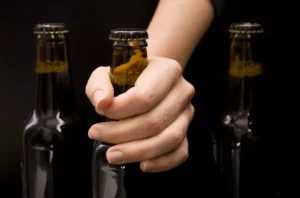
That increase in prevalence was most apparent in patients with a disease duration of less than 4 years. Other researchers observed that the prevalence of neuropathy in type 1 diabetics increased in a linear fashion with the alcohol amount consumed (Mitchell and Vinik 1987). Those researchers also reported that diabetics who consumed more than eight standard drinks per week developed peripheral neuropathy faster than did diabetics who consumed eight or fewer drinks per week. It’s important to keep an eye out for hypoglycemia when drinking alcohol, especially if you have diabetes. Alcohol can affect the liver, lowering blood sugar levels, and it can interact with some medications, including those used by many people with diabetes. To circumvent this concern, a variable infusion of glucose was administered, which effectively clamped the blood glucose at either fed or high physiological concentrations during the concomitant infusion of saline or alcohol.
- Baseline characteristics, presented by numbers (n) and proportions (%) by alcohol use in SPHC 2002 for all participants and participants with diabetes at follow-up (2003–2011) are presented in Table I.
- Basal cardiac glucose uptake (both atria and ventricle) also did not differ between pair-fed and chronic alcohol-fed rats 14.
- In the analysis, low exercise activity was regarded as physical inactivity.
- Heavy alcohol consumption (i.e., 200 grams of pure alcohol, or approximately 16 standard drinks, per day) can cause ketoacidosis in both diabetics and nondiabetics (Wrenn et al. 1991).
Why can your blood sugar drop several hours after drinking alcohol?
However, the etiology of hyperinsulinemia varies depending on the type of treatment strategy. The combination of a GLP-1 agent and a sulfonurea is a potent mixture and may cause lower than normal blood glucose levels (i.e., hypoglycemia). Evidence of an alcohol effect on glucose uptake by other peripheral tissues is limited. It appears that neither acute alcohol intoxication nor chronic alcohol feeding consistently alters basal glucose uptake by skin, intestine, spleen, lung, kidney or whole liver 12,14,73.
What Is a Type 2 Diabetes Friendly Diet? A Complete Guide

We also assessed self-rated general health, by the question ‘How do you judge your general health condition? ’ There were five responding options ‘very good’, ‘good’, ‘fairly good’, ‘poor’ and ‘very poor’. We categorized general health into ‘good general health’ (very good and good) and poor general health (fairly good, poor and very poor). Feelings of alcohol rehab anxiety/depression was defined as (yes, to a certain extent, and highly) versus (no, I am not) and based on a question about health today.
What was your fasting blood glucose? (with some chat) Diabetes Discussions

They can tell you if alcohol might interfere with your medications or cause other health issues. A second issue is how well the two questions from the original Karasek & Theorell questionnaire capture low job control. The original questionnaire comprises five items on demands that refer to the load of work a person experiences, and six items on job control that describe a person’s skills and ability to master his/her work activities 21.
BDNF
- A person’s overall health plays a significant role in how their body responds to alcohol.
- Only the work by Sumida et al. 29 has attempted to systematically investigate sex differences in this regard and their work suggests that alcohol has a more pronounced inhibitory effect on hepatic gluconeogenesis in chronic alcohol-fed female rats.
- When drinking alcohol is combined with the medications most often used to treat diabetes—particularly insulin and sulfonylureas, low blood glucose can result.
- Plus, if you are on insulin for diabetes or you are taking diabetes medication that stimulates insulin-creation, your insulin will continue to work and drop your blood sugar further.
Consuming alcohol can worsen diabetes complications, such as retinopathy (damage to blood vessels in the retina), neuropathy (nerve damage), and nephropathy (kidney damage). If you take metformin, drinking excessive amounts of alcohol can increase the risk of a rare condition called lactic acidosis when lactic acid builds up in the bloodstream. Drinking alcohol in high quantities regularly can cause an increase in blood pressure.
- That means that these may lead to higher blood sugar levels than other types of drinks, including light beers, red and white wines, or distilled spirits.
- Ketoacidosis, which occurs primarily in diabetics, is a condition characterized by excessive levels of certain acids called ketone bodies (e.g., acetone, acetoacetate, and β-hydroxybutyrate) in the blood.
- Your provider or dietitian can also tell you how to fit alcohol into your diet.

Doctors advise some people with diabetes to abstain from alcohol for reasons unrelated to their blood sugar. The Department of Veterans Affairs (DVA) warns that individuals with diabetes may have other conditions that alcohol could affect. In addition, certain non-diabetic medications do not mix well with alcohol. The ADA does diabetes and alcohol blackouts not forbid a person with diabetes from consuming alcohol, but they do not advise it either. If someone with diabetes chooses to drink alcohol, the ADA recommends limiting consumption to a moderate intake. This translates to one drink per day for females and up to two per day for males.
Warehousing glycogen, the stored form of glucose, is among the many tasks your liver performs. The glycogen stays there until your liver breaks it down for release to address low blood sugar. But if you have diabetes and want to enjoy happy hour, it’s best to take an approach that offers you some protection.
Baseline characteristics, presented by numbers (n) and proportions (%) by alcohol use in SPHC 2002 for all participants and participants with diabetes at follow-up (2003–2011) are presented in Table I. This article does not contain any studies with animal subjects performed by any of the authors. Drinkchat is a free online service for anyone who is looking for information or advice about their own, or someone else’s drinking. Trained advisors are on hand to give you confidential advice, and you don’t even have to make a phone call.

In this regard, the euglycemic hyperinsulinemic clamp is considered the gold standard and is extensively used to directly assess whole-body insulin action. In response to acute alcohol administration, numerous studies have demonstrated the presence of whole-body insulin resistance, as inferred by the lower exogenous glucose infusion rate (GIR) necessary to maintain euglycemia or the GIR/insulin ratio. Further, in one study, alcohol produced a right-shift in the insulin dose-response curve suggesting both a decrease in insulin sensitivity and maximal responsiveness 115. Furthermore, acute alcohol administration 98 and long-term ingestion of moderate doses of alcohol consumption 113 have been infrequently reported to reduce insulin secretion.